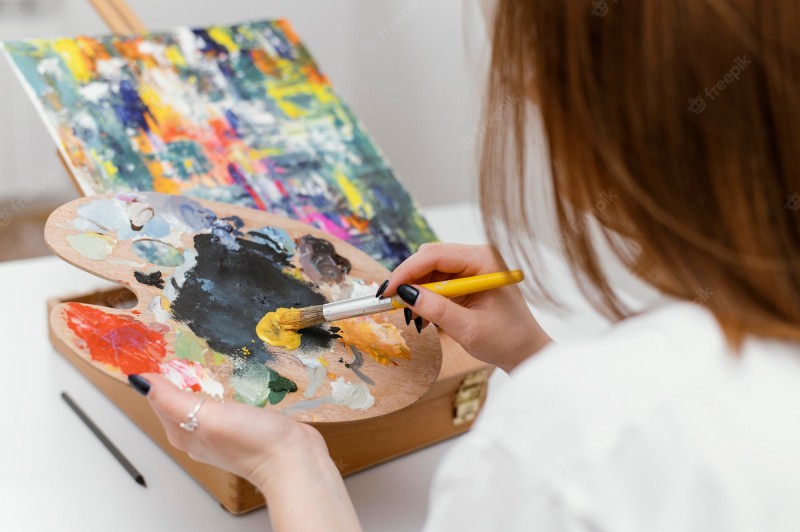Art as a medium for young adults to deal with varied emotions


Ravi Nawal, Founding Patron & Advisor, Children's Art Museum of India shared his expert insights on how art helps young adults in managing their varied emotions.
We are well aware that art created by children fosters creativity. Their ability to be imaginative is valued greatly, and it creates a pathway to understanding them better. Young individuals have a natural tendency to unwind and feel better after engaging in creative pursuits. They leave feeling like they've accomplished something and are ready to unleash their imaginations again.
The creation of art together might be the answer to their desire for a satisfying group activity. It's a terrific chance for children to interact with others, whether they're close relatives or classmates, and learn and practice healthy social skills. The imaginative play of colours on a canvas at a young age offers several additional advantages for the physical, emotional, and mental health of youngsters.
Art fosters creative cognition
Learning about art and design makes learning at school more fun and helps students get ready for life after school. The majority of us know intuitively that art is vital for our children; we just feel this because we've seen our children engaged in art. In addition to what we feel and think, however, there is a great deal of factual material that is both intriguing and useful on the importance of art to our children's development. A child's capacity for understanding and responding to the world around them grows as they develop their creative abilities and acquire new means of expressing themselves and sharing their ideas with others.
A child's development is greatly aided by exposure to the arts since it promotes the growth of vital abilities and helps to develop the creative side of the brain. However, art may become a vital means of unrestrained self-expression and astonishment for a youngster, well beyond the physical data evaluated by research. The importance of art is equivalent to the importance of language, or perhaps the importance of life itself. It's a cornerstone of what sets us apart as humans.
Read: Digital Design: A Blend of Creativity
Art can amplify self-expression
Art is a crucial means through which children express themselves. In certain cases, the finished product of their creative efforts will serve as a manifestation of that expression. You can see the two-year-old with the new baby sister busy pounding his fists into Play-Doh, the six-year-old painting flowers with great arm motions combining reds and yellows, and the ten-year-old sketching a portrait of her recently deceased grandma. Children are able to process their emotions and experiences via art-making, and the end product may serve as a springboard for meaningful conversations about those emotions and experiences. A child's imagination may grow via exposure to art as well. The youngsters provide their own answers and instructions instead of being given them. To really appreciate art, one must be open to new ideas, try new things, and critically evaluate what they've seen.
Curates comprehension and life concepts
Children who participate in artistic activities are better able to accept themselves and recognize the amount of influence they have over the outcomes of their actions. They also learn to appreciate one another's work, and share and take turns as a result of their involvement in the creative process. A child's ability to express their individuality while also showing achievement and accomplishment via the medium of art is beneficial to their mental health since it contributes to the development of a healthy self-concept.
Know in detail: Career in Fine Arts
Propels problem-solving skills
The development of children's brains may be helped in several ways through arts and crafts. Art enhances problem-solving and critical thinking abilities, which are transferable to other aspects of life. Visual learning is facilitated by art appreciation. Interpreting, analyzing, and critiquing what they see are transferable abilities that may be used in various aspects of their lives.
Art also enhances originality and workmanship, since children learn to be distinctive and innovative from an early age. This motivates them to express themselves and causes them to choose their preferred creative form. In addition, art encourages children to focus and concentrate as they try to complete a project, particularly if it's something they find intriguing or unexpected.
Vantage view
Art is a very adaptive activity. Our cognitive abilities can create art, which can either be something as simple as a sunrise scene or something as nuanced as a portrait. But both of them are carved by the creative process of our brains and look beautiful. When an artist is appreciated, it emboldens them and drives them to work on their next masterpiece. Some platforms have opened their doors to these artistic minds to give a platform to the young artists of India. An exclusive children's art museum has recently initiated canvassing for art mavens among children and is helping them voice their feelings through art.